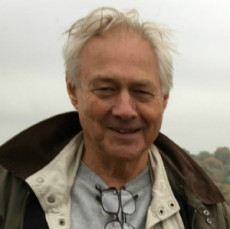Kathmandu, Sept 28, 2004: Nepal has been in turmoil since King Gyanendra dismissed the government, took over power and suspended civil liberties on February 1, 2004. The King’s coup further polarized a country that has been in the throes of a brutal civil war. But Nepalese society is also troubled by deep discrimination against members of its Dalit caste, who number roughly 4 million and suffer from extreme poverty and exclusion. Between September 28 and October 10 I visited villages in Eastern Nepal with a delegation from the Jagaran Media Center (JMC), a Nepalese organization and AP partner which campaigns for Dalit rights. In the following blogs I will explore the origins of caste discrimination in the villages, and meets some of the advocates who are fighting it.
I arrive in Nepal to a bomb scare. Just as the Himalayas are coming into view, the pilot comes on to say that the plane is landing on a remote runway of Kathmandu airport, and that we are to leave the plane immediately without taking hand luggage.
We scuttle out to be greeted by fire trucks and wary soldiers, and are driven to a separate part of the terminal. Here we are left to bake for two hours. The plane does not blow up and the security people start to relax, but we continue to cook. Eventually our bags are laid out on the tarmac and a mighty scramble ensues as we are reunited with our cameras and i-pods.
In one sense the day has been wasted. In another, it has been an interesting introduction to Nepal. The Nepali passengers on our flight took the ordeal badly – indeed we might still be at the airport if it were not for one priest, who lost his temper. We foreigners, however, were considerably more relaxed. After all, this is Nepal, where things happen in their own way and at their own pace. This is what gives Nepal its charm for tourists.
Here you pass time without feeling guilty, wear ragged old clothes that would make you blush at home, and haggle over clothes that are already indecently cheap. Throw in friendly people, colorful temples, majestic mountains and the historic Thamel district – where young couples surf the Internet and Baby Boomers browse nostalgically through bootleg CDs and second-hand books – and you have a true Shangri-La. It is all wonderfully liberating.

Suspending reality: tourists in Kathmandu’s Thamel district
But not for Nepalis. This is one of the world’s poorest countries and those at the bottom of the heap are truly poor. At dawn children come out in the Thamel and pick through the dusty piles of garbage. By dusk, they are already sniffing glue in front of the Internet cafes and coffee shops. Out in the countryside, where most Nepalis live, many people are so poor that they do not receive a wage. Most of them are Dalit, who have also been known as Untouchables.
Adding to the poverty, this is a country at war. Since 1996, Maoist rebels have been trying to overthrow the monarchy, and on February 1 of this year King Gyanendra responded by dismissing the parliament. The seven major political parties have vowed to mount public demonstrations until he permits a real democracy.
This political drama is so intense that it overshadows the incredible pressures on Nepal’s poor. Over the next ten days I will try to see both sides – the politics and the poverty – through the eyes of two Advocacy Project partners in Nepal.
As AP readers will know, the Collective Campaign for Peace (COCAP) has been playing an important role in the pro-democracy movement. Readers may be less familiar with AP’s second partner, the Jagaran Media Center, which is gaining a reputation as a highly effective advocate for Dalit rights. The JMC has asked AP to help its grassroots members use information technology in their advocacy.
Tomorrow: COCAP’s human rights monitors and the struggle for democracy
Posted By Iain Guest
Posted Sep 28th, 2004

